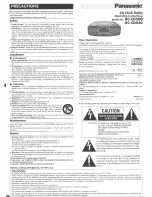
Exalt Installation and Management Guide
s-Series Digital Microwave Radios
201511
73
2008-02-27
polarization, upgrade) may also be necessary. These antenna aspects are also typically mandated by a
user license and often cannot be changed without licensing approval.
Path Obstruction
A path obstruction is defined as an object, such as a building or tree, impeding the proper path of the
radio system. If the system design was proper at the time of installation and issues arise at a later date,
an updated path profile and survey may be necessary to identify changes in path clearance.
Misaligned Antenna
At the time of initial installation, it is critical that the antennas at each end are properly aligned and
that the designed RSL is achieved. However, antennas may become misaligned due to high winds,
changes in the guy-wiring systems keeping the antenna mast stable, or loosening of the antenna
mounting hardware. A reduction in the RSL of the link is symptomatic of this condition, but this
condition is not the only condition that results in a reduction of RSL. However, if conditions occur
where the antenna alignment may be suspected, the mechanics must be inspected and the antennas
realigned.
Faulty Antenna
A faulty antenna is rare, but is still a possibility. In some cases, the mechanics of the antenna feed can
get moisture inside, or a bad or weak connection in the pin and connector structure of the antenna
may occur. A VSWR measurement of the antenna connection can be made to verify this condition,
although this is challenging with direct-ODU mount antennas. Sometimes tapping lightly on the
antenna can cause changes to BER and/or RSL, and this can be an indication of a faulty antenna feed.
Improper Grounding
In addition to being a potential human safety issue, improper system grounding is a somewhat
common condition that can cause continuous bit errors or bit errors when metal objects come in
contact with the radio, transmission system, or racking system. If touching the radio causes errors,
grounding is the cause. It can be difficult to identify grounding problems, but a professional
electrician can normally inspect a system and identify if there are deficiencies in the grounding
system.
Insufficient Link Margin
Ideally, the link was designed with enough link margin (fade margin) to allow for multipath
propagation and atmospheric fading and still remain reliable. In some cases, link margin is
compromised by economic factors, such as using low-cost RF cabling or lower-cost antennas that
have less gain or deficient performance compared to higher cost transmission system components. In
some cases, there may be antenna size restrictions that forced the design to not have the desired
amount of link margin.
If the link was designed with poor link margin, there are likely many cases of bit errors and outages.
The antenna system and transmission line can be upgraded to help reduce this. If the link design was
installed with sufficient margin, but RSL is reduced, the remaining link margin may no longer be
enough to maintain a reliable link. The causes of RSL reduction were previously described, but are
usually due to new path obstruction(s) or antenna misalignment due to wind or mechanical factors.
The antenna height or location can be changed to overcome new obstructions. Realignment of the
antenna, and/or improvement to mechanical structures can help overcome antenna misalignment.
Summary of Contents for EX-11s
Page 103: ...201511 2008 02 27...
















































